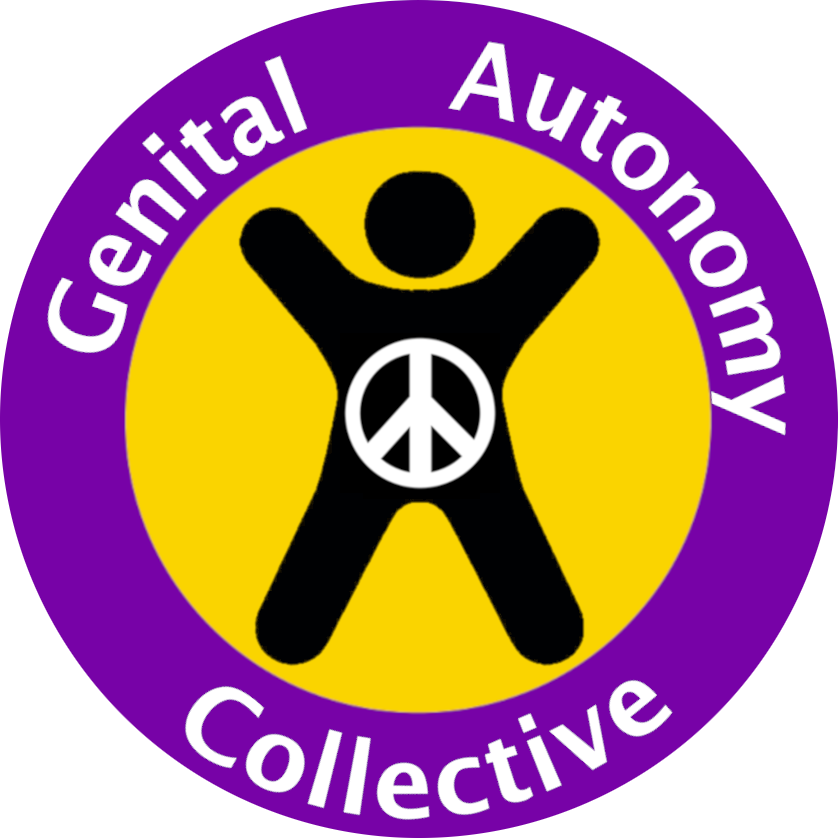Frequently Asked Questions
Core Concepts
What is child genital cutting (CGC)?
Child genital cutting (CGC) is a broad term that refers to any non-consensual alteration or removal of genital tissue performed on a minor or coerced adult.
This includes, but is not limited to:
- Male genital cutting (MGC), also known as male genital mutilation (MGM)
- Female genital cutting (FGC), also known as female genital mutilation (FGM)
- Intersex genital cutting (IGC), also known as intersex genital mutilation (IGM)
These practices are often framed with euphemistic language such as infant circumcision or intersex corrective or normalization surgery, but at their core, they all involve the alteration of a child’s genitals without their consent.
Local perceptions of what genital cutting entails
In Western countries, there’s often a distorted perception of what female genital cutting entails, many assume it’s always the most extreme version involving the full removal of external genitalia, usually a clitoridectomy. While some rarer forms are indeed severe, others involve less tissue removal than typical male genital cutting (circumcision) within the West. The most common form removing the analogous tissue of the penile foreskin, the clitoral hood. Despite this, female genital cutting is almost universally condemned, while male genital cutting’s severity is minimized and normalized.
Typical western male genital cutting (circumcision) removes 15 square inches of tissue.
At GAC, we advocate for the end of all forms of non-consensual child genital cutting, and for the right of every person to make informed autonomous decisions about their own body, including genitals, when they’re of age to do so.
What is genital autonomy?
Genital Autonomy is a fundamental human right to control what happens to one’s own genitals. The term is primarily used in reference to freedom from non-consensual or coerced genital alteration.
For minors, this means the right to not be subjected to child genital cutting such as:
- Intersex ‘normalization’ surgeries (also known as Intersex Genital Mutilation or IGM)
- Male Circumcision ( Also known as Male Genital Mutilation or MGM)
- Female Circumcision (Also known as Female Genital Mutilation or FGM)
For adults, genital autonomy also means supporting the right to informed, consensual decisions about one’s own body later in life, including: foreskin restoration or labia stretching, body mods such as piercings, gender affirming surgeries, and any other self-directed expression of identity, sexuality or healing.
What is intersectionality?
Intersectionality is a framework to analyze how different aspects of a person’s identity such as race, gender, sexuality, disability, and class interact in unique and compounding ways when shaping their experiences of privilege, discrimination, and access to resources.
Coined by Legal Scholar Kimberlé Crenshaw in 1989, the term highlights that systems of oppression are not isolated. You’ve likely heard the name George Floyd, but have you heard of Breonna Taylor?
Breonna Taylor, a black woman, was killed by police in her own home in 2020. While her death sparked outrage, it received far less immediate attention than cases involving black men such as George Floyd. This difference isn’t random, it’s an example of how black women are often excluded from gender and racial justice movements alike. https://www.biscmi.org/wp-content/uploads/2020/11/K-Crenshaw-Demarginalizing-the-Intersection.pdf
What is intersectional genital autonomy?
People's experience of violated genital autonomy vary widely depending on their gender, race, class, and more.
For example, many transfeminine people who were circumcised face unique challenges if they later seek vaginoplasty. Surgeries can rely on foreskin or associated mucosal tissue to create inner labia, but that tissue may no longer be available. This often leaves trans people with fewer surgical options, more complicated outcomes, and potentially limits access to affirming care altogether.
Many Jewish people who oppose circumcision may feel unwelcome in genital autonomy spaces that fail to make room for culturally sensitive dialogue, while also feeling alienated from religious communities that frame circumcision as sacred or identity-affirming. This can leave Jewish survivors of circumcision or Jewish parents exploring alternatives, isolated from both support and belonging. These dynamics are not rooted in inherent incompatibility between Judaism and genital autonomy, but in the need for more inclusive and respectful spaces.
These are just two of many, many, unique scenarios that illustrate why genital autonomy advocacy must be intersectional. At GAC, our goal is to bring intersectionality to the genital autonomy movement because we know that the harm, and the healing doesn’t happen in a vacuum.
